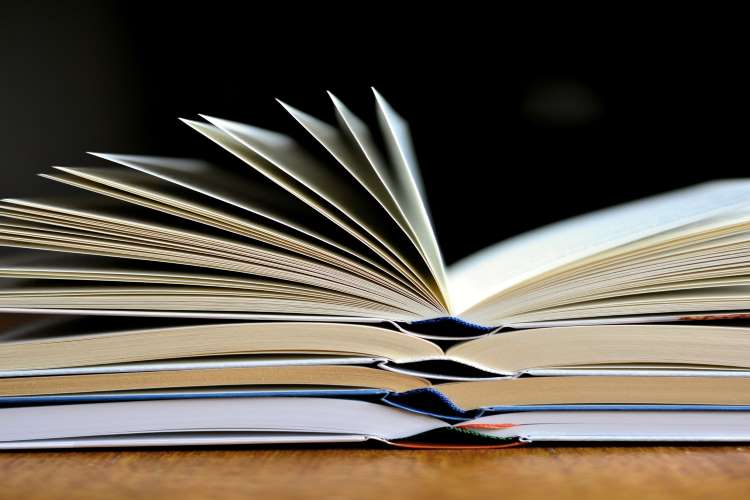You’ll need to learn how to schedule your time quickly and efficiently. You will be instructed to read three different passages and answer related questions in your reading test. The reading test material differs between the IELTS Academic and IELTS General Training tests.
Read the passage on the topic of the Braille System below and check out the solved questions. This will give you an indication of what questions will be there on the main test.
The Braille System IELTS Reading Answers
Find solved questions just after Part 6 of this reading passage. Go through them carefully to learn the technique.
Braille Reading Answers Part 1
Braille is a contact reading and writing device for the blind in which created dots indicate the letters and numbers. It also has counterparts for punctuation marks and markers for showing letter groupings.
Braille is read by running the hand or hands down each line from the left side. Reading is usually done with both hands, with the index fingers doing most of the work. Reading pace is approximately 125 words per minute on average. However, faster rates of up to 200 words a minute are feasible.
Blind people will research and learn the written word while using the braille alphabet. They will also learn about writing conventions such as pronunciation, punctuation, paragraph formatting, and footnotes.
Braille Reading Answers Part 2
Most notably, braille allows blind people to read a wide variety of items, including leisure and instructional reading, income reports, and restaurant menus. Contracts, laws, insurance plans, indexes, and cookbooks are also critical aspects of everyday adult life. People who are blind will also enjoy activities and cultural stimulation through braille by using materials such as musical scores, songbooks, card games, and chess.
Various other techniques have been tried over the years to help blind people to read. Many of them, though, were elevated copies of print letters. The braille scheme is widely regarded as a success because it is built on a logical series of signs designed for the fingertips instead of imitating signs designed for the eyes.
Also Read: Describe a Time You Saw Children Behave Badly in Public: IELTS Cue Card Sample Answers
Braille Reading Answers Part 3
Braille has a long tradition dating back to the early 18th century. In Bonaparte’s French army, a man called Charles Barbier invented a unique method known as “night printing” so soldiers could talk peacefully at night. Barbier, a veteran of the military, saw the deaths of several troops who used lights after dark to decipher battle signals. Because of the light from the torches, enemy combatants realized where the French soldiers were, resulting in the loss of several men.
Barbier’s “night printing” scheme is built on an elevated 12-dot cell that is two dots broad and six dots deep. Inside the cell, each dot or mixture of dots indicated a letter or phonetic sound. The issue with the legal regulations was that the normal fingertip did not detect any of the dots with a single touch.
Braille Reading Answers Part 4
On Jan 4, 1809, Louis Braille was born in the French village of Coupvray. He went blind at a young age after inadvertently stabbing himself in the eye with his father’s blade. Braille’s father was a leather maker who used an awl to poke holes in the leather goods he made.
At the age of eleven, Braille was inspired to change Charles Barbier’s “night printing” code in order to develop an effective written correspondence device for other blind people. He had started at the National Institute of the Blind in Paris a year before. He spent the best part of the next nine years designing and perfecting the pattern of raised dots that bears his signature, Braille.
Braille Reading Answers Part 5
With all of Braille’s efforts, the coding was now focused on cells of just six dots rather than twelve. This significant advancement meant that a fingertip could cover the entire cell unit with a single impression and travel quickly from one cell to the next. Braille eventually gained acceptance around the world as the primary medium of written communication for blind people. Today, it is essentially the same as when he invented it.
However, some minor changes have been made to the braille system, most notably the inclusion of contractions describing clusters of letters or entire words that occur regularly in a script. Contractions allow for easier braille reading. It also contributes to the reduction in the scale of braille books, making them even less bulky.
Braille Reading Answers Part 6
Braille died in 1853, at the age of 43, a year before his native France adopted braille as the official correspondence method for the blind. Braille made its way “across the pond” to America a few years back, in 1860, where it was adopted by The Missouri School for the Blind in St. Louis.
The legacy of Louis Braille has enriched the millions of lives of people who are blind. As a consequence, blind people all over the world learn from Braille’s work on a regular basis.
Today, we transpose braille code in a variety of languages all over the world. Louis will be very proud to know that his invention has helped many people gain literacy over the years. Subsequently, people who are blind can appreciate all the printed word has to give just like everyone else. The effect is enormously uplifting and helps them to achieve academic success and their career paths.
Also Read: MCQ Type of Questions in IELTS Reading Exam: Here’s How to do It
IELTS Exam Questions for The Braille System
IELTS Exam Questions: Vocabulary
Q. Synonym of “ability”
Ans. Competence
Q. Synonym of “baffle”
Ans. Bewilder
Q. Synonym of “develop”
Ans. Grow
Q. Antonym of “interpret”
Ans. Misinterpret
Q. Antonym of “abortive”
Ans. Successful
Q.Antonym of “adjacent”
Ans. Distant
IELTS Exam Questions: Fill The Gaps
Q. ____ are also critical aspects of everyday adult life.
Ans. Contracts, laws, insurance plans, indexes, and cookbooks.
Q. Braille died in ____.
Ans. 1853.
Q. However, faster rates of up to ____ a minute are feasible.
Ans. 200 words.
IELTS Preparation Tips for Reading Section
Enjoy While Reading
It is crucial that you enjoy your reading time. Reading for fun not only motivates you to learn more but also enhances your reading abilities. This includes the ability to concentrate on what is most relevant, gaining an understanding of synonyms, expanding the vocabulary, and pursuing the author’s key ideas.
Take advantage of the chance to learn. Newspapers, journals, and magazines are ideal for reading while travelling by bus or train, or while waiting for a medical visit, for example.
Longer works of art, such as novels or short stories, can be more enjoyable in the privacy of your own home. What matters is that you gain exposure reading what you love in a number of formats.
Get more Ideas
It’s a smart thing to summarise what you’ve studied. You will do this by jotting down the key points of a chapter of a novel or an essay that has piqued your curiosity. Summarizing what you’ve read in your own words lets you develop your grammar, which is essential for your IELTS exam.
Also Read: Matching Heading Type of Questions in IELTS Reading: Here’s How to do It
Proper Time Management
Keep track of the time you spend reading. One of the most critical skills for IELTS test-takers is time management, so pick reading passages of 700 to 1000 lines, then allow yourself twenty minutes to note down some relevant keywords and the main point before outlining what you read.
You may also practise making up questions to go along with the paragraph you’ve read, using standard IELTS query forms like:
#True or false or not given.
#Sentence completion.
#Matching headings.
#Multiple-choice questions.
If you don’t even know the opinion on a subject in the IELTS Reading section, it’s best to miss it and carry forward without wasting too much time worrying. Remember that you will still return to the issue later.
Knowing you’ve answered less hard questions should provide you with the courage you need to answer the more difficult ones.
Key Tips for IELTS Reading
#When responding, make sure to use the right spellings from the passage.
#There may be questions to test the comprehension of the given passage. For example, the query may be about the subject, highlighting specific words or ideas that represent the core message of the passages.
#It is a smart habit to highlight keywords when you read. For example, if there are important dates, make a note of them! When a question about them is answered, it becomes easier to identify them.
#Make sure your spelling is always right, particularly when copying from a passage.
#If you are taking IELTS on paper, record your responses on the answer board. You will not be given any more time to pass any of your responses later on.
Conclusion
Reading passages in IELTS can be frustrating, but if you approach them correctly, you will be able to understand the questions. The first and most critical step is to train. Try to practice as many reading passages as you can to improve your reading speed. Do not squander your time by reading the whole section word by word. Use the skimming strategy to highlight the most appropriate pieces.
Would you like to boost your IELTS exam preparation? Visit IELTS Ninja and enrol in a course to achieve your dream band.
Also Read: The Problem of Scarce Resources: An IELTS Topic with Reading Answers










